Imagine this: you walk into an empty room (maybe a classroom, a yoga studio, or a gymnasium). Well, it’s not quite empty… there are 8 children scampering around, hopping from yoga mat to yoga mat, excited to start their yoga class with you! You better have a plan, a thoughtful, organized, well-thought out plan to corral these kids and provide a meaningful hour filled with yoga, breathing, meditation, and fun. What are you going to do?
Hint: the answer is not PANIC!
Designing an effective, thorough kids’ yoga class isn’t difficult, but it does take some forethought and planning. Below is a list of what topics and practices should be included in a child’s yoga practice. Simply find or create activities to cover these topics, fill in the transitions with music or other attention-keeping activities, and you can lead a meaningful class, every time.
Get Started: Have a step-by-step process for children to come into the room and set up for class. Where will they put their shoes (can they keep on socks)? What is the bathroom procedure? Water or snacks? Will they have mats? Do they set up in a circle or lines? Where do parents wait? Is there a sign-in sheet?
Get Attention: Consider starting your class in the same way each time. Kids will know what to expect and feel like they have a demarcation between the “real world” and their yoga class. Some teachers like a welcome song, others like to begin with Sun Salutations, or an opening chant. Choose something age-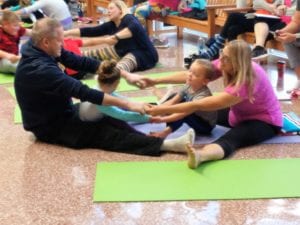
Get Moving: In a 45 minute class, you’ll need about 20 minutes of physical activity to get the kids moving. You’ll want to wear them out a little bit so they are ready to settle into stillness for the guided meditation at the end. As a teacher, you get to pick what you enjoy doing. Read and act out a book using yoga postures. Sing and dance to a movement-based song (Kidding Around Yoga has about 5 dozen). Teach specific postures using proper alignment (best for tween/teens). Play with partner poses or group postures. Play some yoga-fied games like Trees Tag (like Freeze Tag) or Freeze Dance. Basically, keep them moving!
Get Meditating: Every yoga class should provide instruction and time to practice meditation. Present different kinds of meditative practices in a kid-friendly way: tratak, walking, mantra, guided. You can change your technique weekly, or stick with one for a longer duration to get the hang of it. Not all kids will participate 100% of the time, and that’s okay. They are still hearing your explanation – they’ll try it when they are ready. Settling into meditation after movement is often easier for little ones because once their bodies can be still, their minds can be too. You should also always provide a yoga nidra opportunity – or guided meditation. The kids can be resting on their mats or sitting with their heads on their desks if you are in a classroom. Speaking gently, instruct the students to relax their bodies, part by part, including their face, and even their breath. Then guide them through a meditation. You can take them on a visit to a garden, an undersea village, the moon, or over the rainbow. Try to utilize all five senses so their minds are surrounded by the stimuli you provide, not by outside sounds or inner thoughts. Let them rest this way for as long as they can be still – somewhere between 2 and 8 minutes depending on the age and 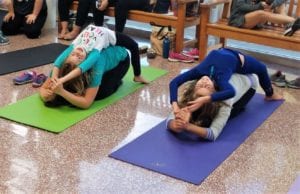
Get breathing: After the kids sit up from their guided meditation, teach them a breathing (or pranayama) technique. Some breaths are energizing, some are calming, some are balancing. Demonstrate the breath, try it with the class, and then ask the kids when they might want to use this breath. Then practice it again.
Get out of there: Just like at the beginning of class, you should have a mindful routine for ending class and student pick-up. Do kids wipe their mats and roll them up? Do you help with shoes or is that the parents’ job? Is there a closing song or chant to mark the end of class? Where do parents wait to get their child? The better the plan, the smoother the dismissal.
And finally, a word to the wise: over-plan! Seriously, OVER PLAN for your class. Have an extra song or game handy to whip out if chaos arises or if you move too quickly through your plan. If you present yourself with confidence and arrive prepared, your kids will have a great time and you won’t be intimidated by the multiple pairs of eyes staring at you. You got this!

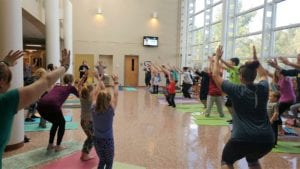
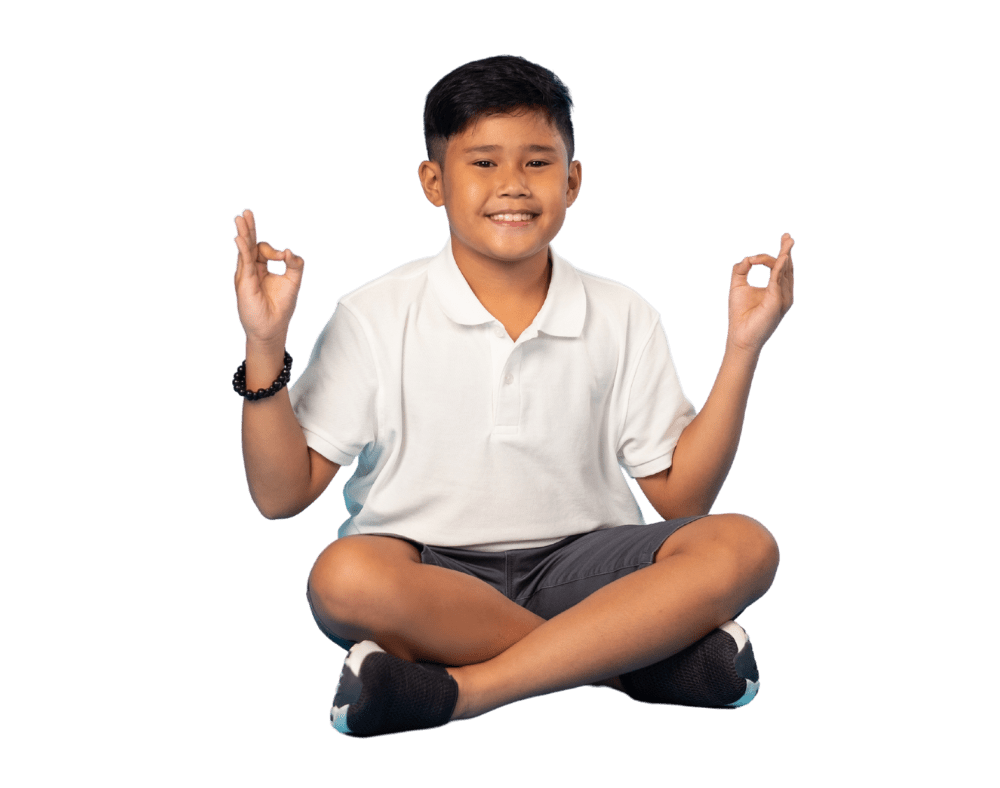
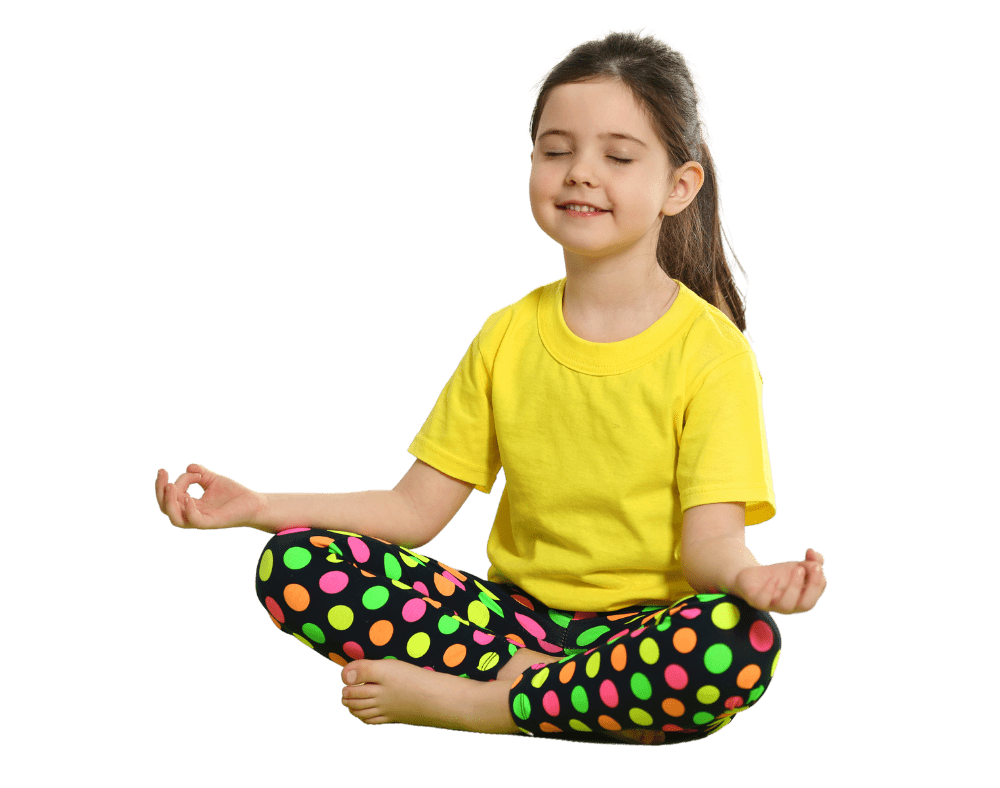
Thank you! Had trouble sticking to the time frame in my first KAY class. Thanks for the tips! 🙂
When you show up prepared and over-planned, time always seems to fly by! Thanks for reading and for making the world a better place for our children!
Looking forward to using some of your suggestions.
Thank you!
Thank you for bringing yoga to children – we will change the world through peaceful, happy, confident kids!
Brilliant article, thanks a lot!
You’re very welcome. So glad you find our content useful!
Thank you for this. I will be teaching my first class ever coming this October, 2021. I am reviewing my manual to prepare. This also helped! Thanks again.
The KAY Manual is a HUGE help! You are going to have a wonderful class – good luck! Remember that if you’re having fun, then the kids will certainly have fun!